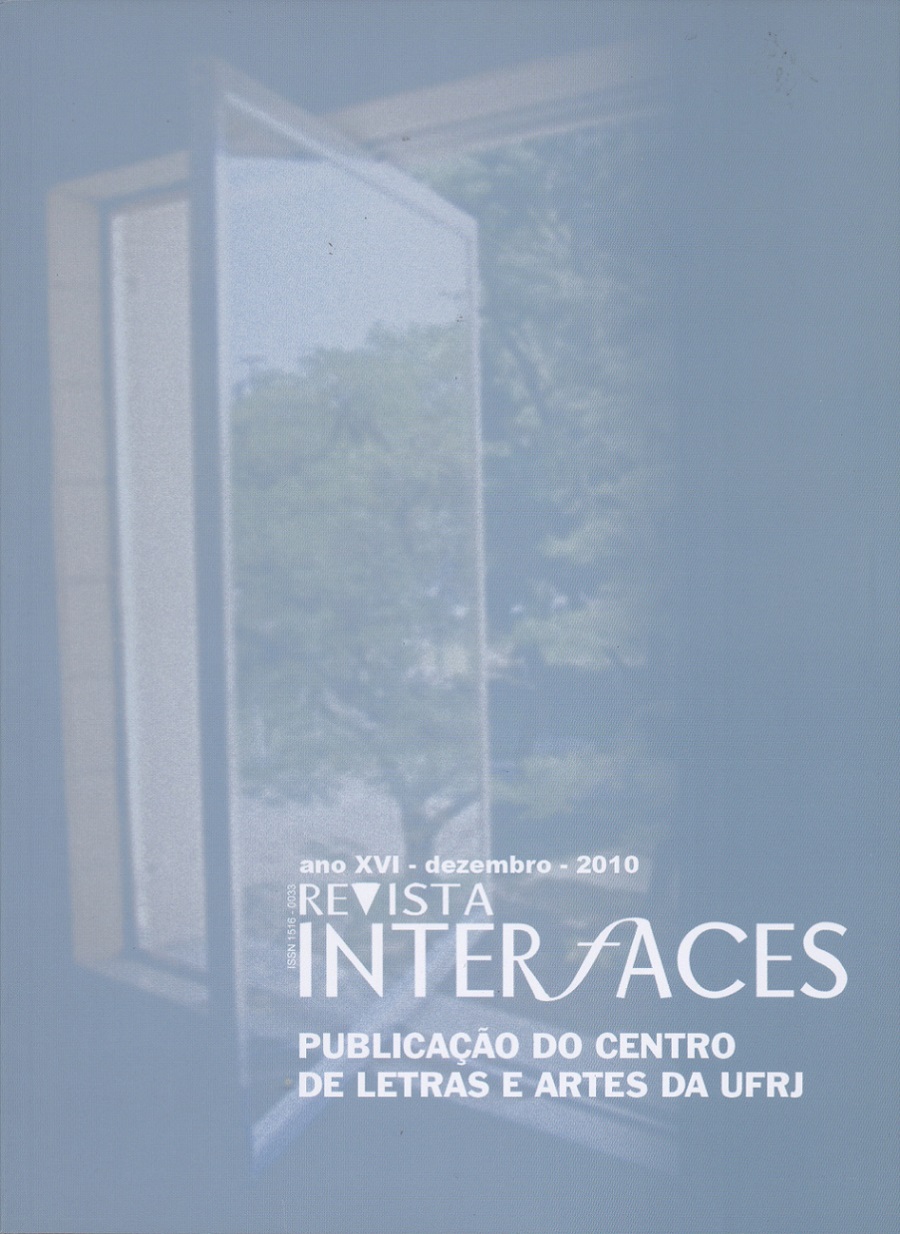Traduções experienciais da Urbanidade
Palavras-chave:
Urbanidade, Teoria Ator-Rede, ColetivoResumo
This article offers a reflection on the meaning of Urbanity under the principles of Actor-Network Theory (ANT) and framing it while Scientific speech. The ANT makes possible to translate the world as a net configured by the overlap of a dynamic and heterogeneous set of experiences or flows and not determined possibilities. Differently of relate and representation, translation has meant linguistic, figured and it implies in displacement of a place for another one, as well as interpretation and understanding. To translate is to make a connection to bind at and it assumes perception, as well as interpretation and appropriation. Urbanity can be translated as a collective one that results of the relations and interactions between human beings and nonhuman beings whose agreement depends on the existential context of our experiences. Based on the ANT, in place to define or to explain Urbanity, I consider to translate it as a collective one that it results of the relations and interactions between human beings and non-human beings, whose agreement depends on the existential context of our experiences. All urban collective endowed or not with Urbanity, congregates the human materiality of its physical space and elements that inhabit them, its values, affections and emotions. While some cities and places in move them, others causes malaise. These feelings or translations of Urbanity if reveal the relations between the diverse human actants and non-human actants presents in the cities and places and cannot be completely or faithful translated by words. The feeling of Urbanity contains (but it is not limited in) the materiality of a place and it does not have to be understood as a molding conceived exclusively by the human beings. The nature of the Urbanity results of the relation between nature - the world of the things in itself - and society - the world of the men in itself. The relations of Urbanity had appeared with the urbanization and precede urbanism and its theories. Urbanity can be understood as a set of narratives to be translated in its dynamic complexity. In place of the great history and a single narrative, Urbanity implies to assemble and cultivate multiple minor narratives which remain cohesive as one fiber fabric or a multiple but common tissue. Urbanity implies in the production of decentralized and not singular forms of being and knowing. Urbanity can be translated as a common world that will continue to exist independently of what the architects say or think.Downloads
Referências
BAUMAN, Zigmunt. Identidade. Rio de Janeiro: Jorge Zahar, 2005.
CASTRO, Rafael B. de. Redes e Vigilância: Uma experiência de cartografia psicossocial. Rio de Janeiro: UFRJ, 2008. Dissertação (Mestrado em Psicossociologia de Comunidades e Ecologia Social).
CUKIERMAN, Henrique. Yes, nós temos Pasteur. Rio de Janeiro: Relume Dumará, 2007.
DICIONÁRIO ELETRÔNICO HOUAISS DA LÍNGUA PORTUGUESA (v 1.0). Objetiva: São Paulo: 2009.
LATOUR, Bruno. Keynote Speech: On Recalling ANT. In: LAW, John; HASSARD, John (eds) Actor Network Theory and After, Oxford: Blackwell, 1999.
______. Ciência em Ação. São Paulo: Editora UNESP, 2000.
______. A Esperança de Pandora. Bauru/SP: EDUSC, 2001.
______. Políticas da Natureza. Bauro/SP: EDUSC, 2004.
______. Reassembling the Social: na Intriduction to Actor-Network Theory. Nova Iorque: Oxford Press, 2005.
LAW, John. Notes on the Theory of the Actor Network: Ordering, Strategy and Heterogeneity. Lancaster: Centre for Science Studies, Lancaster University, 1992. Disponível em < www.lancs.ac.uk/
fass/sociology/papers/law-notes-onant.pdf> consulta em 28jul2010.
LYNCH, Kevin. A Imagem da Cidade. São Paulo: Martins Fontes, 1999. (edição original em Inglês de 1960)
MACHADO, Carlos J. S. A Invenção científica segundo o modelo da sociologia dos cientistas e os Social Studies of Science. In Ciência e Cultura vol. 58 n.3 São Paulo, Jul/set 2006. Disponível em <http://cienciaecultura.bvs.br/scielo.php?pid=S0009-67252006000300002&script=sci_arttext > acesso em 29jul2010.
MATURANA, Humberto. Cognição, Ciência e Vida Cotidiana. Belo Horizonte: Editora UFMG, 2001.
PEDRO, Rosa. Cognição e Tecnologia: entre natureza, cultura e artifício. In Documenta, n. 9. Rio de Janeiro: UFRJ, 1998
RHEINGANTZ, Paulo A. De Corpo Presente - Sobre o papel do observador e a circularidade de suas interações com o ambiente construído. In: Anais do NUTAU'2004. São Paulo: NUTAU/
USP, 2004. Disponível em
RHEINGANTZ, P.; ALCANTARA, D.; AMORIM, F.; BARBOSA, A.; LAUREANO, A. ; Rua Pires de Almeida: Observação Incorporada de Um Lugar Público Particular. In Paisagem e Ambiente, v.22, p.30 - 40, 2006.
RHEINGANTZ, P.; ALCANTARA, D.; BARBOSA, A. Pires de Almeida: Reduto da Alma Encantadora das Ruas do Rio de Janeiro. In COMAS, C. A.; PEIXOTO, M.; MARQUES, S. M. (org.) O Moderno Já Passado O Passado no Moderno: reciclagem, requalificação, rearquitetura.Porto Alegre : Editora UniRitter, 2009, v.6, p. 279-300.
URBANIDADE. Disponível em < http://groups.google.com.br/group/urbanidade > consulta em 10set2010
VARELA, Francisco. Sobre a competência ética. Lisboa: edições 70, 1992.
VARELA, Francisco; THOMPSON, Evan; ROSCH, Eleanor. A mente Incorporada. Porto Alegre: ArtMed, 2003.
WIKIPÉDIA. Disponível em < http://pt.wikipedia.org > consulta em 11set2010.
Downloads
Publicado
Edição
Seção
Licença

Este trabalho está licenciado sob uma licença Creative Commons Attribution 4.0 International License. O envio dos trabalhos implica a cessão sem ônus dos direitos de publicação, inclusive em versão eletrônica online. Todos os diretos provenientes da venda da revista ficam cedidos à Revista InterFACES. A republicação dos trabalhos deve mencionar a publicação original em Revista InterFACES.


